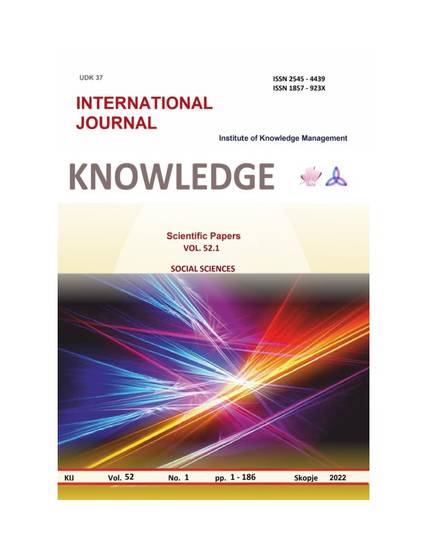
Article
TEACHING STUDENTS ABOUT DISASTER PREPAREDNESS: “IF YOU ARE PREPARED, YOU NEED NOT FEAR”
Knowledge International Journal
(2022)
Abstract
Because of the current conflict and refugee situation in Ukraine, students may be concerned about their own safety in a world of turmoil, where there seems to be no end to the calamities they face. Life-coach Mark Shepherd uses the motto “If you are prepared, you need not fear” in leadership training. This theme is appropriate when teaching students about disasters and their impacts. This paper presents a curriculum and provides a list of resources that teachers can use in instructing students about disaster preparedness and evacuation readiness. It is divided into five topics or lessons. First, what is the nature and causes of crises? Second, what are the social-economic, psychological, and physical impacts of the disasters? Third, how to distinguish truth from falsehoods about disasters? Fourth, what roles can individuals, communities, governments, non-profit organizations, and media play in providing relief from disasters? Finally, how can individuals and households prepare for disasters and evacuations?
Keywords
- disasters,
- curriculum,
- youth,
- media literacy,
- preparedness
Publication Date
2022
Publisher Statement
Each paper is reviewed by the editor and, if it is judged suitable for this publication, it is then sent to two referees for double blind peer review.
The editorial review board is consisted of 67 members, full professors in the fields 1) Natural and mathematical sciences, 2) Technical and technological sciences, 3) Medical sciences and Health, 4) Biotechnical sciences, 5) Social sciences, and 6) Humanities from all the Balkan countries and the region.
Citation Information
Bela, M., Keqmezi-Rexhapi, Z., $ Fisher, J.R. (2022). TEACHING STUDENTS ABOUT DISASTER PREPAREDNESS: “IF YOU ARE PREPARED, YOU NEED NOT FEAR”. Knowledge International Journal, 52:1 (133-137).
